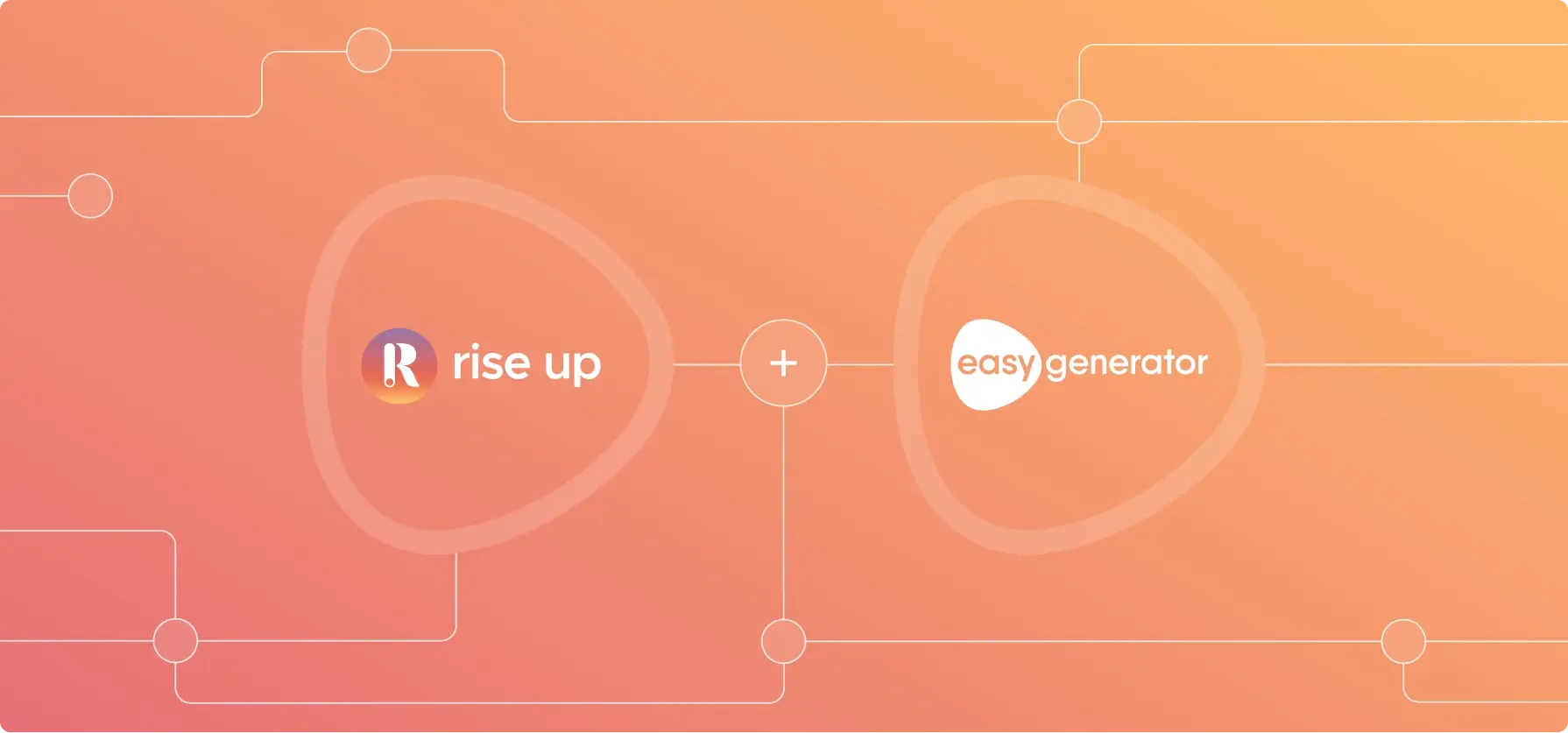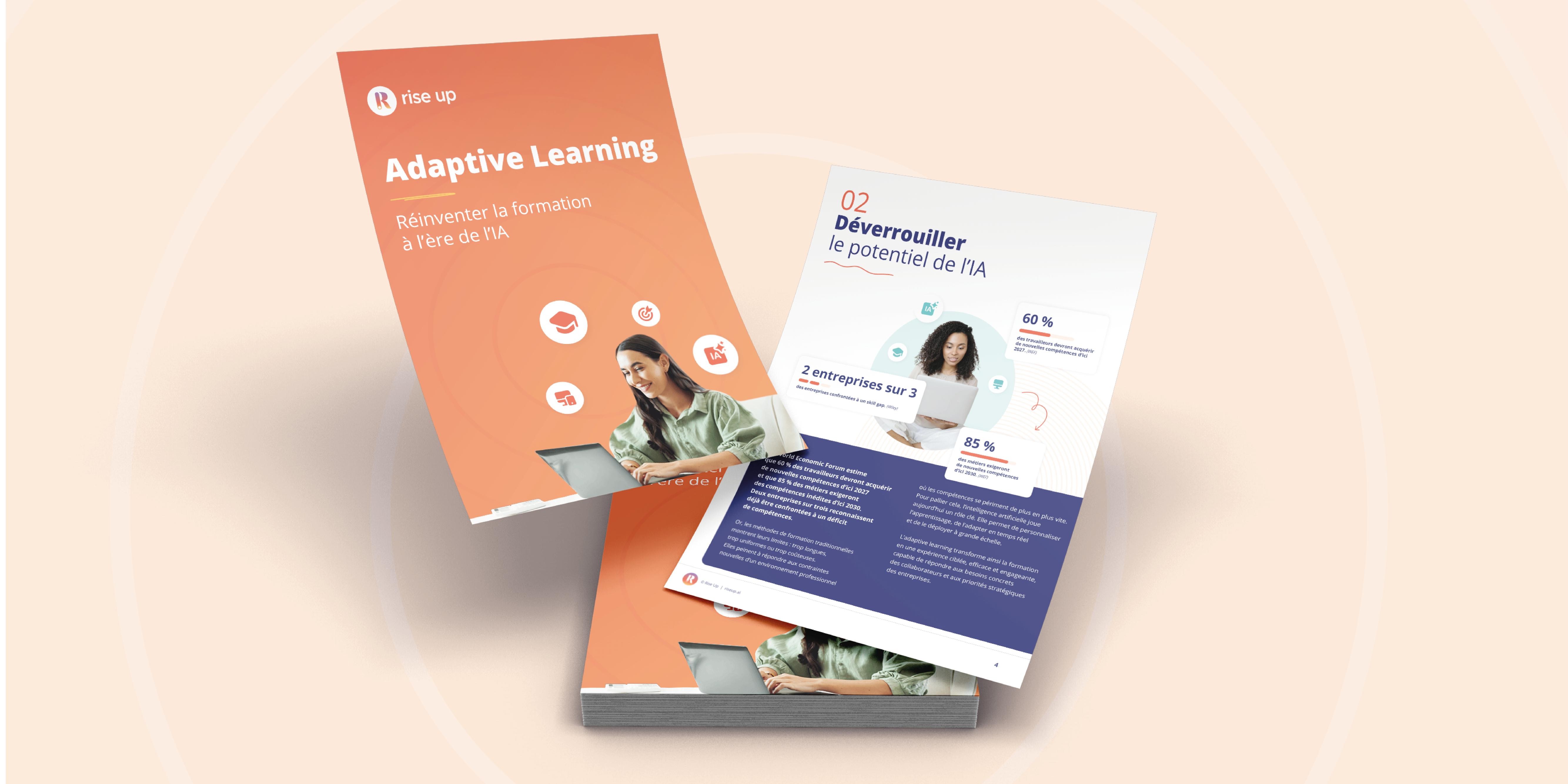LXPs and social learning
6 minutes of reading | 2022-02-24
Plenty of questions still surround the way we, as humans, learn new skills. There’s no doubt, however, that our interactions with others play a key role in this process. This principle lies at the heart of how learning experience platforms (LXPs) work.
LXPs come with numerous features aiming to help learners connect with one another. Together, they are known as social learning, and they’re one of the key reasons why more businesses are investing in LXPs today. We’ll discuss why social interaction is vital to learning and show how platforms like Rise Up can help.
About LXPs
Before discussing the role social learning plays in learning experience platforms, we need to define what an LXP is. In brief, an LXP is an online tool that aims to provide learning tailored to each individual. On an LXP, each learner’s training pathway evolves over time to meet their changing needs and preferences. This feature is known as adaptive learning.
Complementing this is another central facet of LXPs: social learning. Using one of these platforms means that you can move away from the traditional teaching structure, where the trainer imparts knowledge to learners. Instead, the best LXPs create a system in which everyone can share information and resources.
This doesn’t mean that LXPs do away with trainers, though. Indeed, they retain a key role in helping learners to gain new skills, including by leading groups and helping to promote social interaction. A good example of how this is made possible is via a virtual classroom.
The role of social interactions in learning
How social interactions help us to grow
Learning experience platforms put a strong emphasis on the social aspects of learning. There’s a good reason why: developing bonds with others has been proven to be one of the most effective ways to gain new skills.
Much of this stems from human nature. As a species, we are sociable creatures, and we need to communicate with one another in order to grow and to find our place in the world. This same principle applies equally to learning. Acquiring new knowledge and skills is much simpler and more natural when we do so by interacting with those around us.
In the 1960s, the Canadian psychologist Albert Bandura formulated these ideas into the basis for social learning theory. This aims to demonstrate how each of us, from the day we are born, picks up new skills through social interactions, and how we model our own behaviour on others through observation. More generally, Bandura shows that we learn by interacting directly with our social environment.
Social learning: how does it work?
At the heart of social learning is the concept of interaction. Interactions are, by nature, reciprocal. When person A speaks to person B, each of them will cause the other to react in a certain way, and each reaction will in turn influence the other person once again. It’s easy to see how this can cause one party to replicate the behaviour of another, and how it can help to strengthen the relationship between the two. As people interact, they feed on one another’s responses.
In the context of professional training, interactions are made more effective by the fact that all learners involved share common interests, and are all working to gain specific skills. As a result, everyone can take part in discussions on the same shared theme, and can compare their point of view with those of others. This encourages learners to take a broader view of the subject, and helps in the gradual development of new abilities.
This form of learning is mutually beneficial and cooperative, and allows everyone taking part to support one another. This in turn increases motivation levels and gets employees more involved in their own training process.

Social learning on an LXP
What are the benefits of social learning for LXPs?
Learning experience platforms place a high value on how learners interact with one another and with their trainers, and put these bonds at the very centre of professional training. However, you may not realise why social learning is so important to learning experience platforms.
The benefits of this approach quickly become apparent, however, when you take social learning theory into account. For our entire lives, we have gained skills by watching and copying those around us, and we communicate with each other to gain a broader understanding of a topic. LXPs simply provide a way to put this into practice in an online environment.
We can also see how important social learning is by analysing what happens when this aspect is neglected. Take e-learning, for example. This approach contains very little social interaction with trainers or team members, and largely consists of leaving employees to watch videos and complete assessments on their own. It’s little wonder that this leads to many people feeling unmotivated, eventually failing to complete the course entirely.
By prioritising the user experience, LXPs help to keep employees engaged, reducing drop-off rates as a result. They provide a space in which the social aspect of learning is valued and where each individual’s contributions are welcomed. Better still, everyone can access the platform, no matter where they’re located.
A community-centred environment
We’ve already spoken about how LXPs allow for learners to form their own communities. By making social learning possible online, they help to bring people together all while avoiding the downsides associated with in-person training. But what features do they use to make this happen?
Firstly, they use some of the features of a social network. Employees can interact in a similar way as they would on apps like Facebook, such as sharing content, posting comments and sending messages to each other—with the only difference being that the discussion is centred around learning.
LXPs can also connect to apps such as Slack, which allows employees to communicate in real-time. It also makes collaboration easier by enabling the creation of specific channels and providing one platform on which all useful information can be shared. There’s also the possibility to use learning experience platforms to set up message boards on which learners can add forum contributions.
Another plus is that LXPs allow employees to access social learning spaces using their smartphone. Platforms like Rise Up make accessing mobile learning easy, as it’s available across all devices and comes with its own app. This means you can access training content anywhere you want, whenever you want. What’s more, by mimicking familiar apps, LXPs help to make training feel like more of a natural part of the learner’s life.
Finally, LXPs make it easy to set up virtual classes. This allows employees to interact directly with their trainer and facilitates supported learning. It’s also a useful tool for group work, and allows teams to collaborate on a project even when they’re working remotely.
What's in it for admins?
One of the central aims of an LXP is to improve the experience for learners. However, there are also benefits to be reaped for those who run the training programme.
With platforms such as Rise Up offering advanced reporting capabilities, it’s easier than ever for you to keep track of how your learners are doing. You can use this data to further improve the quality of your training over the long run. Additionally, LXPs make managing training programmes much easier via their intuitive interface and by automating some of the more onerous tasks.
Perhaps the most important advantage of using an LXP, though, is that it’s better at keeping learners engaged—and this feature means employees are likely to gain new skills more easily. In return, you can expect better performance from individuals and from the company as a whole.






